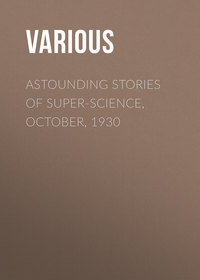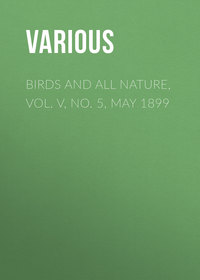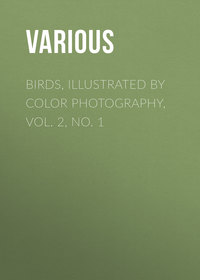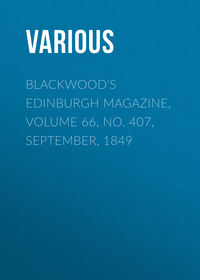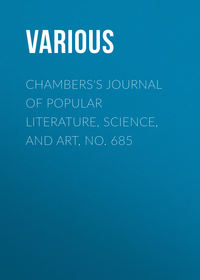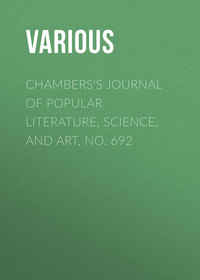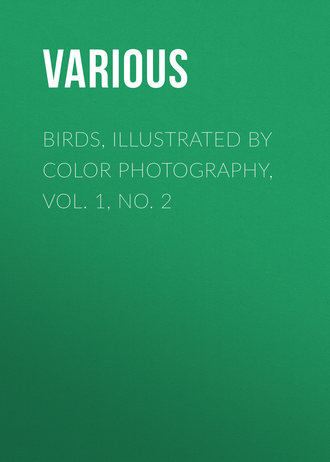 полная версия
полная версияПолная версия
Birds, Illustrated by Color Photography, Vol. 1, No. 2
THE KINGFISHER
Dear Children:
I shall soon arrive from the south. I hear that all the birds are going to tell stories to the boys and girls.
I have never talked much with children myself for I never really cared for people. They used to say that the dead body of a Kingfisher kept them safe in war and they said also that it protected them in lightning.
Even now in some places in France they call us the moth birds, for they believe that our bodies will keep away moths from woolen cloth.
I wish that people would not believe such things about us. Perhaps you cannot understand me when I talk. You may think that you hear only a child’s rattle.
Listen again! It is I, the Kingfisher. That sound is my way of talking. I live in the deep woods. I own a beautiful stream and a clear, cool lake. Oh, the little fish in that lake are good enough for a king to eat! I know, for I am a king.
You may see me or some of my mates near the lake any pleasant day. People used to say that we always brought pleasant weather. That is a joke. It is the pleasant weather that always brings us from our homes. When it storms or rains we cannot see the fish in the lake. Then we may as well stay in our nests.
My home once belonged to a water rat. He dug the fine hall in the gravel bank in my stream. It is nearly six feet long. The end of it is just the kind of a place for a nest. It is warm, dry and dark. In June my wife and I will settle down in it. By that time we shall have the nest well lined with fish bones. We shall put in some dried grass too. The fish bones make a fine lining for a nest. You know we swallow the fish whole, but we save all the bones for our nest.
I shall help my wife hatch her five white eggs and shall try in every way to make my family safe.
Please tell the people not to believe those strange things about me and you will greatly oblige,
A neighbor,
The Kingfisher.
THE KINGFISHER
The Lone FishermanTHE American species belongs to the true group of Kingfishers. It occupies the whole continent of North America and although migrating in the north, he is a constant resident of our southern states. The belted Kingfisher is the only variety found along the inland streams of the United States. Audubon declares that “belted” should apply only to the female, however.
Like most birds of brilliant plumage, the Kingfisher prefers a quiet and secluded haunt. It loves the little trout streams, with wooded and precipitous banks, the still ponds and small lakes, ornamental waters in parks, where it is not molested, and the sides of sluggish rivers, drains and mill-ponds.
Here in such a haunt the bird often flits past like an indistinct gleam of bluish light. Fortune may sometimes favor the observer and the bird may alight on some twig over the stream, its weight causing it to sway gently to and fro. It eagerly scans the shoal of young trout sporting in the pool below, when suddenly it drops down into the water, and, almost before the observer is aware of the fact, is back again to its perch with a struggling fish in its beak. A few blows on the branch and its prey is ready for the dexterous movement of the bill, which places it in a position for swallowing. Sometimes the captured fish is adroitly jerked into the air and caught as it falls.
Fish is the principal food of the Kingfisher; but it also eats various kinds of insects, shrimps, and even small crabs. It rears its young in a hole, which is made in the banks of the stream it frequents. It is a slatternly bird, fouls its own nest and its peerless eggs. The nesting hole is bored rather slowly, and takes from one to two weeks to complete. Six or eight white glossy eggs are laid, sometimes on the bare soil, but often on the fish bones which, being indigestible, are thrown up by the bird in pellets.
The Kingfisher has a crest of feathers on the top of his head, which he raises and lowers, especially when trying to drive intruders away from his nest.
The plumage is compact and oily, making it almost impervious to water. The flesh is fishy and disagreeable to the taste, but the eggs are said to be good eating. The wings are long and pointed and the bill longer than the head. The voice is harsh and monotonous.
It is said that few birds are connected with more fables than the Kingfisher. The superstition that a dead Kingfisher when suspended by the throat, would turn its beak to that particular point of the compass from which the wind blew, is now dead. It was also supposed to possess many astonishing virtues, as that its dried body would avert thunderbolts, and if kept in a wardrobe would preserve from moths the woolen stuffs and the like contained in it.
Under the name of “halcyon,” it was fabled by the ancients to build its nest on the surface of the sea, and to have the power of calming the troubled waves during its period of incubation; hence the phrase “halcyon days.”
A pair of Kingfishers have had their residence in a bank at the south end of Washington Park, Chicago, for at least three seasons past. We have watched the Kingfisher from secluded spots on Long Island ponds and tidal streams, where his peculiar laughing note is the same as that which greets the ear of the fisherman on far inland streams on still summer days.
THE BLACKBIRD
“I could not think so plain a birdCould sing so fine a song.”One on another against the wallPile up the books – I am done with them all;I shall be wise, if I ever am wise,Out of my own ears, and of my own eyes.One day of the woods and their balmy light —One hour on the top of a breezy hill,There in the sassafras all out of sightThe Blackbird is splitting his slender billFor the ease of his heart:Do you think if he said“I will sing like this bird with the mud colored backAnd the two little spots of gold over his eyes,Or like to this shy little creature that fliesSo low to the ground, with the amethyst ringsAbout her small throat – all alive when she singsWith a glitter of shivering green – for the rest,Gray shading to gray, with the sheen of her breastHalf rose and half fawn —Or like this one so proud,That flutters so restless, and cries out so loud,With stiff horny beak and a top-knotted head,And a lining of scarlet laid under his wings – ”Do you think, if he said, “I’m ashamed to be black!”That he could have shaken the sassafras-treeAs he does with the song he was born to? not he!– Alice Cary.“Do you ne’er think what wondrous beings these?Do you ne’er think who made them – who taughtThe dialect they speak, where melodiesAlone are the interpreters of thought?Whose household words are songs in many keys,Sweeter than instrument of man ere caught!Whose habitation in the tree-tops evenAre half-way houses on the road to heaven!* * * * * * *“You call them thieves or pillagers; but know,They are the winged wardens of your farms,Who from the cornfields drive the insidious foe,And from your harvest keep a hundred harms;Even the blackest of them all, the crow,Renders good service as your man-at-arms,Crushing the beetle in his coat of mail,And crying havoc on the slug and snail.”– From “The Birds of Killingworth.”BLUE MOUNTAIN LORY
THIS bird inhabits the vast plains of the interior of New South Wales. It is one of the handsomest, not only of the Australian Parrots, but takes foremost place among the most gorgeously dressed members of the Parrot family that are to be met with in any part of the world. It is about eleven or twelve inches in length. The female cannot with certainty be distinguished from her mate, but is usually a very little smaller. The Lory seldom descends to the ground, but passes the greater part of its life among the gum trees upon the pollen and nectar on which it mainly subsists. In times of scarcity, however, it will also eat grass seeds, as well as insects, for want of which it is said, it often dies prematurely when in captivity.
Dr. Russ mentions that a pair obtained from a London dealer in 1870 for fifty dollars were the first of these birds imported, but the London Zoological Society had secured some of them two years before.
Despite his beauty, the Blue Mountain Lory is not a desirable bird to keep, as he requires great care. A female which survived six years in an aviary, laying several eggs, though kept singly, was fed on canary seed, maize, a little sugar, raw beef and carrots. W. Gedney seems to have been peculiarly happy in his specimens, remarking, “But for the terribly sudden death which so often overtakes these birds, they would be the most charming feathered pets that a lady could possess, having neither the power nor inclination to bite savagely.” The same writer’s recommendation to feed this Lory exclusively upon soft food, in which honey forms a great part, probably accounts for his advice to those “whose susceptible natures would be shocked” by the sudden death of their favorite, not to become the owner of a Blue Mountain Lory.
Like all the parrot family these Lories breed in hollow boughs, where the female deposits from three to four white eggs, upon which she sits for twenty-one days. The young from the first resemble their parents closely, but are a trifle less brilliantly colored.
They are very active and graceful, but have an abominable shriek. The noise is said to be nearly as disagreeable as the plumage is beautiful. They are very quarrelsome and have to be kept apart from the other parrots, which they will kill. Other species of birds however, are not disturbed by them. It is a sort of family animosity. They have been bred in captivity.
The feathers of the head and neck are long and very narrow and lie closely together; the claws are strong and hooked, indicating their tree climbing habits. Their incessant activity and amusing ways make these birds always interesting to watch.
THE RED WING BLACK BIRD
The Bird of SocietyThe blackbirds make the maples ringWith social cheer and jubilee;The redwing flutes his o-ka-lee. – Emerson.THE much abused and persecuted Red Wing Black Bird is found throughout North America, from the Atlantic to the Pacific; and it breeds more or less abundantly wherever found. In New England it is generally migratory, though instances are on record where a few have been known to remain throughout the winter in Massachusetts. Passing, in January, through the lower counties of Virginia, one frequently witnesses the aerial evolutions of great numbers of these birds. Sometimes they appear as if driven about like an enormous black cloud carried before the wind, varying every moment in shape. Sometimes they rise suddenly from the fields with a noise like thunder, while the glittering of innumerable wings of the brightest vermillion, amid the black cloud, occasion a very striking effect. At times the whole congregated multitude will suddenly alight in some detached grove and commence one general concert, that can plainly be distinguished at the distance of more than two miles. With the Redwings the whole winter season seems one continued carnival. They find abundant food in the old fields of rice, buckwheat and grain, and much of their time is spent in aerial movements, or in grand vocal performances.
The Redwings, for their nest, always select either the borders of streams or low marshy situations, amongst thick bunches of reeds. One nest was found built on a slender sapling at the distance of fourteen feet from the ground. The nest was pensile, like that of the Baltimore Oriole.
They have from one to three or more broods in a season, according to locality.
In the grain growing states they gather in immense swarms and commit havoc, and although they are shot in great numbers, and though their ranks are thinned by the attacks of hawks, it seems to have but little effect upon the survivors.
On the other hand, these Black Birds more than compensate the farmer for their mischief by the benefit they confer in the destruction of grub worms, caterpillars, and various kinds of larvae, the secret and deadly enemies of vegetation. It has been estimated the number of insects destroyed by these birds in a single season, in the United States, to be twelve thousand millions.
The eggs average about an inch in length. They are oval in shape, have a light bluish ground, and are marbled, lined and blotched with markings of light and dark purple and black.
BLACKBIRD’Tis a woodland enchanted!By no sadder spiritThan blackbirds and thrushes,That whistle to cheer itAll day in the bushes,This woodland is haunted;And in a small clearing,Beyond sight or hearingOf human annoyance,The little fount gushes. – Lowell.THE BIRD OF SOCIETY
The blackbird loves to be one of a great flock. He talks, sings or scolds from morning until night. He cannot keep still. He will only stay alone with his family a few months in the summer. That is the reason he is called the “Bird of Society.” When he is merry, he gaily sings, “Conk-quer-ree.” When he is angry or frightened he screams, “Chock! Chock!” When he is flying or bathing he gives a sweet note which sounds like ee-u-u. He can chirp – chick, check, chuck, to his little ones as softly as any other bird. But only his best friends ever hear his sweetest tones, for the Blackbirds do not know how to be polite. They all talk at once. That is why most people think they only scream and chatter. Did you ever hear the blackbirds in the cornfields? If the farmers thought about it perhaps they would feel that part of every corn crop belongs to the Blackbirds. When the corn is young, the farmer cannot see the grubs which are eating the young plants. The Blackbirds can. They feed them to their babies – many thousands in a day. That is the way the crops are saved for the farmer. But he never thinks of that. Later when the Blackbirds come for their share of the corn the farmer says, “No, they shall not have my corn. I must stop that quickly.” Perhaps the Blackbirds said the same thing to the grubs in the spring. It is hard to have justice for everyone.
In April the Blackbird and his mate leave the noisy company. They seek a cosy home near the water where they can be quiet until August. They usually choose a swampy place among low shrubs and rushes. Here in the deep nest of coarse grass, moss and mud the mother bird lays her five eggs. They are very pretty – light blue with purple and black markings. Their friends say this is the best time to watch the blackbirds. In the flock they are all so much alike we cannot tell one from another. You would like to hear of some of the wise things Blackbirds do when they are tame.
One friend of the birds turned her home into a great open bird cage. Her chair was the favorite perch of her birds. She never kept them one minute longer than they wanted to stay. Yet her home was always full. This was Olive Thorne Miller. If you care to, you might ask mother to get “Bird Ways” and read you what she says about this “bird of society” and the other birds of this book.
THE AMERICAN RED BIRD
AMERICAN RED BIRDS are among our most common cage birds, and are very generally known in Europe, numbers of them having been carried over both to France and England. Their notes are varied and musical; many of them resembling the high notes of a fife, and are nearly as loud. They are in song from March to September, beginning at the first appearance of dawn and repeating successively twenty or thirty times, and with little intermission, a favorite strain.
The sprightly figure and gaudy plumage of the Red Bird, his vivacity, strength of voice, and actual variety of note, and the little expense with which he is kept, will always make him a favorite.
This species is more numerous to the east of the great range of the Alleghenies, but is found in Pennsylvania and Ohio, and is numerous in the lower parts of the Southern States. In January and February they have been found along the roadsides and fences, hovering together in half dozens, associating with snow birds, and various kinds of sparrows. In the northern states they are migratory, and in the southern part of Pennsylvania they reside during the whole year, frequenting the borders of rivulets, in sheltered hollows, covered with holly, laurel, and other evergreens. They love also to reside in the vicinity of fields of Indian corn, a grain that constitutes their chief and favorite food. The seeds of apples, cherries, and other fruit are also eaten by them, and they are accused of destroying bees.
Early in May the Red Bird begins to prepare his nest, which is very often fixed in a holly, cedar or laurel bush. A pair of Red Birds in Ohio returned for a number of years to build their nest in a honeysuckle vine under a portico. They were never disturbed and never failed to rear a brood of young. The nest was constructed of small twigs, dry weeds, slips of vine bark, and lined with stalks of fine grass. Four eggs of brownish olive were laid, and they usually raised two broods in a season.
In confinement they fade in color, but if well cared for, will live to a considerable age. They are generally known by the names: Red Bird, Virginia Red Bird, Virginia Nightingale, and Crested Red Bird. It is said that the female often sings nearly as well as the male.
THE REDBIRDSTwo Redbirds came in early May,Flashing like rubies on the way;Their joyous notes awoke the day,And made all nature glad and gay.Thrice welcome! crested visitants;Thou doest well to seek our haunts;The bounteous vine, by thee possessed,From prying eyes shall keep thy nest.Sing to us in the early dawn;’Tis then thy scarlet throats have drawnRefreshing draughts from drops of dew,The enchanting concert to renew.No plaintive notes, we ween, are thine;They gurgle like a royal wine;They cheer, rejoice, they quite outshineThy neighbor’s voice, tho’ it’s divine.Free as the circumambient airDo thou remain, a perfect pair,To come once more when ProserpineShall swell the buds of tree and vine.– C. C. M.THE RED BIRDIs it because he wears a red hat,That we call him the Cardinal Bird?Or is it because his voice is so richThat scarcely a finer is heard?’Tis neither, but this – I’ve guessed it, I’m sure —His dress is a primary color of Nature.It blends with the Oriole’s golden display,And the garment of Blue Bird completes the array.– C. C. M.TESTIMONIALS
Frankfort. Ky., February 3, 1897.W. J. Black, Vice-President,
Chicago, Ill.
Dear Sir: I have a copy of your magazine entitled “Birds,” and beg to say that I consider it one of the finest things on the subject that I have ever seen, and shall be pleased to recommend it to county and city superintendents of the state.
Very respectfully,W. J. Davidson,State Superintendent Public Instruction.San Francisco, Cal., January 27, 1897.W. J. Black, Esq.,
Chicago, Ill.
Dear Sir: I am very much obliged for the copy of “Birds” that has just come to hand. It should be in the hands of every primary and grammar teacher. I send herewith copy of “List of San Francisco Teachers.”
Very respectfully,M. Babcock.Lincoln, Neb., February 9, 1897.W. J. Black,
Chicago, Ill.
Dear Sir: The first number of your magazine, “Birds,” is upon my desk. I am highly pleased with it. It will prove a very serviceable publication – one that strikes out along the right lines. For the purpose intended, it has, in my opinion, no equal. It is clear, concise, and admirably illustrated.
Very respectfully,W. R. Jackson,State Superintendent Public Instruction.North Lima, Ohio, February 1, 1897.Mr. W. E. Watt,
Dear Sir: Sample copy of “Birds” received. All of the family delighted with it. We wish it unbounded success. It will be an excellent supplement to “In Birdland” in the Ohio Teachers’ Reading Circle, and I venture Ohio will be to the front with a good subscription list. I enclose list of teachers.
Very truly,C. M. L. Altdoerffer,Township Superintendent.Milwaukee, January 30, 1897.Nature Study Publishing Company,
227 Dearborn Street, Chicago.
Gentlemen: I acknowledge with pleasure the receipt of your publication, “Birds,” with accompanying circulars. I consider it the best on the subject in existence. I have submitted the circulars and publication to my teachers, who have nothing to say but praise in behalf of the monthly.
Julius Torney,Principal 2nd Dist. Primary School, Milwaukee, Wis.




